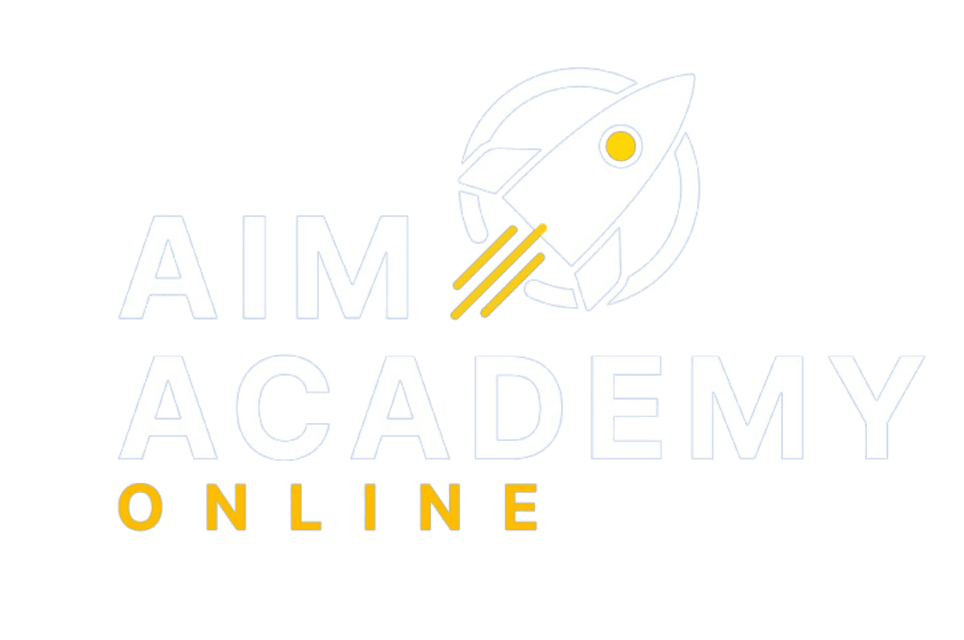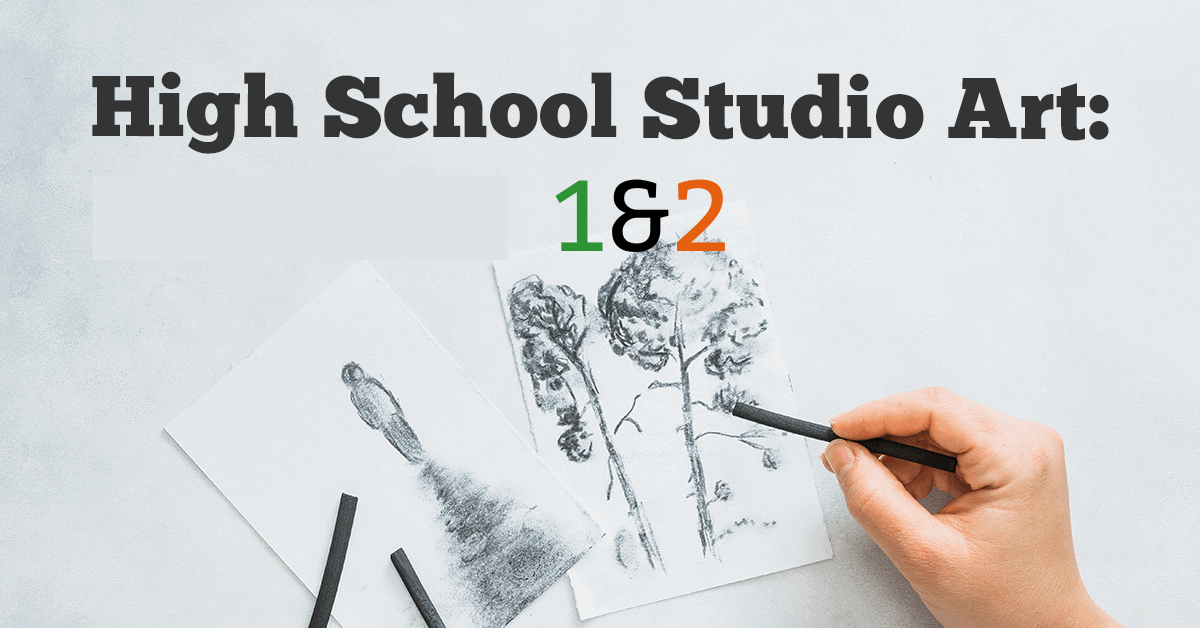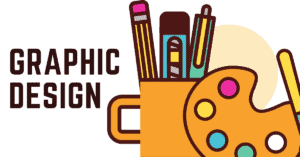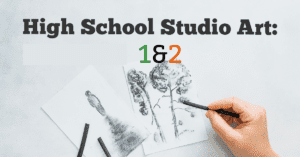Course Description
This live, online visual arts course is suited for high school students in grades 9-12 who are serious about strengthening and expanding upon their basic drawing skills.
This course is year-long, and students who complete both semesters will receive a full high school credit in Visual Arts/Fine Arts. Students may also choose to complete the first semester for 0.5 credits. Students must take the first semester to be enrolled in the second semester of this course.
Together, both semesters (HS Studio Art 1 and HS Studio Art 2) provide students with sequential immersive drawing and design experiences focusing on the fundamental skills of drawing from observation and imagination. In both semesters, students build upon hand/eye coordination and learn to see the world with higher acuity as they make beautiful, refined portfolio-quality drawings, often of subject matter drawn from their own interests.
Particular emphasis is placed upon heightening awareness of shape and proportion, on using the expressive power of varying line weight, and on the importance of using the eraser as a creative tool. Also of great significance is the challenge of developing a more comprehensive understanding of linear perspective, both to make observational drawings stronger and to generate convincing imagery from imagination.
This course seeks to achieve the following goals with each student able to demonstrate the following:
- Understanding basic drawing and design vocabulary and techniques.
- Understanding a variety of media and drawing surfaces.
- The ability to draw from faithful observation of 2D shapes and images and 3D experiences.
- The ability to use line as the principal conveyor of form using contour and gesture drawing.
- The ability to use quick and rough sketching.
- The ability to use lines to represent volume and space: Three-dimensional drawing skills including varied line weight, overlapping contour lines, and hatching.
- The ability to use relative value/tone to convey light, darkness, and volume.
- The ability to use linear perspective in the creation of volume and space.
- An awareness and deepening appreciation of the principles of visual form: space, balance, harmony, rhythm, figure/ground, movement, composition, and more.
- The ability to analyze compositions of existing works and to engage in composing their own.
- An awareness of careers in which drawing/design are fundamental.
- An appreciation of drawing and design as related to traditional and contemporary periods of art.
- An awareness of and experience with collaborative group and self-critique skills related to drawing and design compositions, which are often simply about describing what we see and trying to stick with the point of each assignment.
- Disciplined work habits.
Course Structure
During our virtual class time students are encouraged to draw along, engaging in guided experimentation and warm-ups with various techniques demonstrated by the instructor. Most meetings will include an interactive presentation of new concepts and feature the works of exemplary artists throughout the ages that are relevant to the current assignment. Students are also encouraged to share their works-in-progress, giving and getting feedback on a regular basis.
Weekly homework assignments are an important part of the course and independent practice and application of learned skills are recommended for success. Each week students will be expected to spend a minimum of 1-2 hours each week to refine skills and techniques and to develop projects, many of which spanning multiple weeks.
Weekly assignments may include:
- A weekly 75-minute live meeting
- Interactive discussion of concepts, artworks, artists, and art history in our Canvas Discussion forum
- Art journal/sketchbook prompts
- Preliminary sketches
- In class practice of skills being learned and mastered
- Final projects (emphasis on demonstrating learning)
- Student involvement in learning process
- Use of elements and principles of design related to composition
- Mastering of techniques of media and use of tools
Required materials
- a sketchbook, or loose paper without lines will work
- a 18” x 24” pad of drawing paper – one per semester
- a pad of grey or another mid-toned paper
- a flat drawing surface that can be propped up, such as with an easel
- black markers – fine tipped and brush-tipped
- an opaque white poster marker
- a cheap mechanical pencil
- one or more soft-leaded pencils, such as 5B
- a variety of erasers, including plastic, kneaded, and gum
- a variety of charcoal made for drawing, including vine & compressed
- white chalk and/or white conté crayon
- paper blending stumps
- tracing paper
- transparent material, such as acetate, or a typical sheet protector
- 18” ruler
- a roll of masking tape
Many of these materials can be found elsewhere, but an online shopping list will be made available for the art supplies. Though it is subject to change, here’s a link to the previous semester’s list with these and additional options at Blick art supplies website: https://www.
Who should enroll?
Students in 9th-12th grade should enroll in this class. Because of the amount of focus required for drawing in class, as well as practice work outside of class, this class is suggested for students who enjoy drawing and have had a foundational art course featuring basic art elements and recommended for students who plan to pursue any visual art or design pathway.
Technology Requirements
- Computer with high-speed, broadband Internet, webcam and working microphone for attending live meetings and watching recordings
- A hand-held camera for photographing drawings —phone cameras will work just fine
Evaluation and Feedback
All in-class projects will be submitted at each stage and formally critiqued through our website on Canvas. I will provide detailed critiques on all artwork at each stage of our projects, focusing on understanding and demonstration of the concept versus artistic skill/natural talent with the goal being to improve skills at the individual level. Students will submit a progress photo of their drawings after each class and I will provide video or written individualized feedback on their drawings with guidance and encouragement to challenge their skills. Students will also submit weekly sketchbook assignments for feedback each week as well.
All in-class projects will be given a grade for completion, as well as rubric feedback on the following:
- Perception and accuracy
- Development of skills in seeing and thinking
- Professional presentation and craftsmanship
- Participation in critiques and discussions
- General attitude and effort in the classroom
Communication
I will confirm registration with parents and provide a welcome email with clear details and video instructions on how to navigate this course. All parents are welcome to join us in Canvas as observers, and I will respond to all parents’ and student questions via email within 24 hours during the week, and within 48 hours on the weekend. I prefer communication through Canvas on our course website.





Reviews
There are no reviews yet.